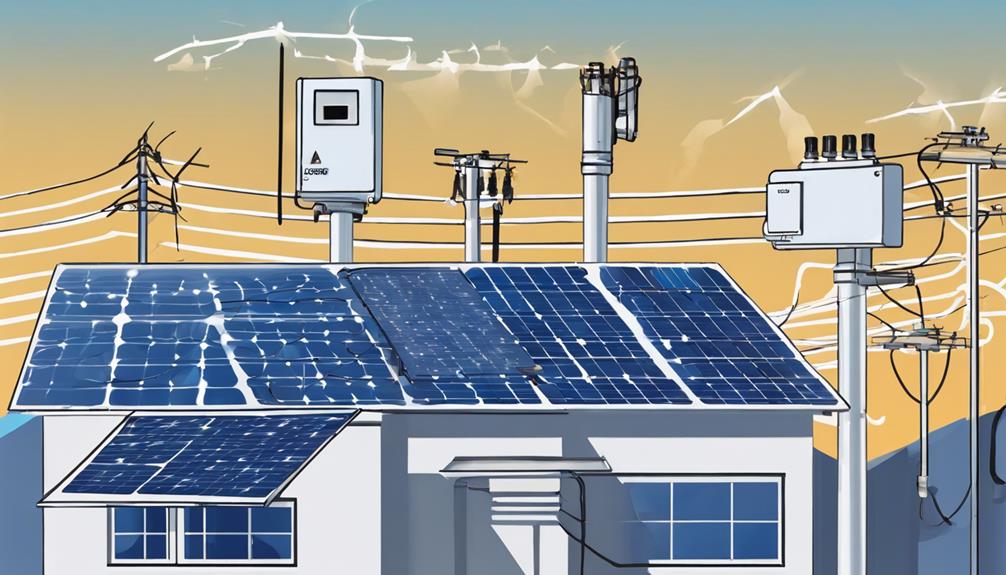
Understanding Solar Panels and Metal Roofs
Solar panels have emerged as a popular energy solution for homeowners looking to reduce their carbon footprint and energy bills. When it comes to installing solar panels, the type of roofing material can influence both performance and installation. Metal roofs, known for their durability and longevity, provide an excellent platform for solar panel installation. In this article, we will delve into the benefits, installation processes, and considerations of solar panels on metal roofs, ensuring you have all the information you need to make an informed decision.
Why Choose Metal Roofs for Solar Panel Installation?
Metal roofs are increasingly favored for solar panel installations due to several advantages. First, their longevity—metal roofs can last 40 to 70 years—means they won’t require frequent replacements that could disrupt solar panel systems. Additionally, metal roofs are lightweight and resistant to extreme weather conditions, including high winds, heavy rain, and snow accumulation. This resilience not only protects the solar panels but also ensures that the roof itself remains intact for years to come. Furthermore, metal roofs have a higher reflectivity, which can help reduce cooling costs in warmer climates, making them an ideal match for solar energy systems.
Cost-Effectiveness of Solar Panels on Metal Roofs
When considering solar panels on metal roofs, cost-effectiveness plays a crucial role. While the initial investment for both metal roofs and solar panels can be higher compared to traditional asphalt shingles, the long-term savings are significant. Metal roofs often qualify for energy efficiency tax credits, and when combined with solar panels, homeowners can benefit from both federal and local incentives. Additionally, the durability of metal roofs means fewer repairs and replacements over time, which further enhances their overall cost-effectiveness. Homeowners can expect a solid return on investment as energy bills decrease and the value of their property increases.
Installation Process of Solar Panels on Metal Roofs
The installation process for solar panels on metal roofs is slightly different from that on other roofing materials. Metal roofs usually have standing seams, which allow for secure mounting without penetrating the roof itself. This is a key advantage because it minimizes the risk of leaks and damage. Professional installers utilize specialized clamps that grip the metal seams, ensuring a secure fit. The installation process typically involves assessing the roof’s condition, positioning the solar panels for optimal sunlight exposure, and connecting the system to your home’s electrical grid. It’s essential to hire experienced professionals familiar with both metal roofing and solar panel installation to ensure a seamless process.
Maintenance Considerations for Solar Panels on Metal Roofs
Maintenance is a critical aspect of any solar panel system, and when installed on metal roofs, the maintenance requirements are relatively minimal. Metal roofs are less prone to mold, mildew, and algae growth compared to other roofing materials, which means that solar panels installed on these surfaces often require less frequent cleaning. However, it’s still important to periodically inspect the panels and roof for debris, ensuring that they can operate at maximum efficiency. If you live in an area with heavy snowfall, it might be necessary to clear the panels of snow to maintain their energy production. Overall, maintaining solar panels on metal roofs is straightforward and manageable.
Environmental Impact of Solar Panels on Metal Roofs
Choosing to install solar panels on metal roofs is not only a smart financial decision but also an environmentally conscious one. Metal roofs are often made from recyclable materials, and when paired with solar energy systems, they contribute to a significant reduction in greenhouse gas emissions. By harnessing solar energy, homeowners can decrease their reliance on fossil fuels, leading to cleaner air and a healthier planet. Furthermore, the reflective nature of metal roofs can help mitigate the urban heat island effect, making them a beneficial choice for cities looking to improve air quality and reduce energy consumption.
Potential Challenges and Solutions
Although there are numerous benefits to installing solar panels on metal roofs, some potential challenges may arise. One common concern is the upfront cost, as both metal roofs and solar panels can be expensive. To address this, homeowners should explore financing options, government incentives, and tax credits available for energy-efficient upgrades. Another challenge is the potential for roof damage during installation; however, hiring qualified professionals can significantly reduce this risk. Additionally, it is essential to ensure that your metal roof is in good condition before installation, as any existing issues could complicate the process.
Conclusion: Embracing Solar Energy with Metal Roofs
In conclusion, installing solar panels on metal roofs presents a myriad of benefits that make it an attractive option for homeowners. From their durability and cost-effectiveness to their minimal maintenance needs, metal roofs are an ideal foundation for solar energy systems. As we continue to move towards a more sustainable future, embracing solar energy through metal roofing can lead to significant financial savings and a positive environmental impact. If you’re considering this energy-efficient upgrade, consult with professionals to explore the best options for your home and start your journey toward energy independence today.
By understanding the benefits and considerations of solar panels on metal roofs, you can make an informed decision that aligns with your energy goals and environmental values. Whether you are looking to reduce your energy bills or contribute to a sustainable future, this combination offers a viable solution that meets both needs.





